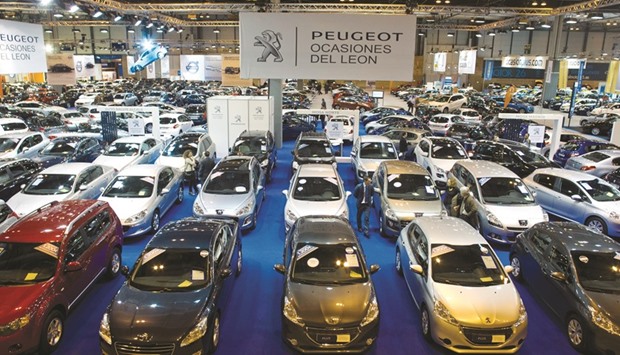Democrats plotting ‘collision course’ with Trump’s tax plan Fumes belching from ageing cars are part of the legacy of Spain’s economic slump, as Madrid steps up its efforts to contain traffic pollution.
Madrid city council last week stopped cars with even-numbered licence plates from entering the central city zone for a day and also imposed speed and parking restrictions as it acted to tackle to traffic pollution made worse by high-pressure weather conditions.
One reason for the build-up of fumes is the increased age of Spain’s car fleet as owners stopped replacing vehicles during the country’s economic slump from 2009 to 2013, said Ricardo Conesa, head of the Automotive Enterprise Programme of IE Business School in Madrid.
The real-estate bust that pitched Spain into a five-year economic malaise sapped demand for all kinds of consumer goods including cars, causing annual registrations to plunge 40% from 2008 to 2012. The decline in investment in new cars is one reason Madrilenos must now increasingly endure the “black beret,” as the pall of pollution that forms over the city during clear weather conditions is known.
“Many people bought a car in 2006 and 2007, during the Spanish economic bonanza,” said Conesa in a phone interview. “And it’s exactly those cars that are turning 10-years-old now.”
As Spain’s real-estate and credit boom was getting into full swing, car registrations peaked in 2005 at 1.65mn a year before falling to 699,589 in 2012, the year the country sought a €41bn ($43.3bn) rescue from Europe for its banking system.
Spain attempted to offset the impact of car sales declines by offering financial incentives for owners to replace vehicles from 2012 to 2016. The cash-for-clunkers program helped remove 1mn old cars from circulation but couldn’t prevent the overall average age of Spain’s car fleet from increasing.
This year, 60% of Spanish cars will be older than 10 years, according to data from the consultancy MSI. In 2017 alone, the number of cars that are more than a decade old will increase by 1.15mn, it said.
The average age of a Spanish car reached 11.9 years in 2016, compared with 7.8 years a decade earlier, according to estimates from the National Association of Car and Truck Makers, known as ANFAC. In 2014, vehicles older than 10 years accounted for 35% of the car fleet in the UK, 42% in France and 50% in Italy, according to ANFAC.
The group doesn’t see the average age of the Spanish fleet falling until 2020, according a report published on its website. At the moment, there are 8mn Spanish cars on the road that were built in 2001 or earlier, according to ANFAC.
“Cars ageing is one of the main reasons for increasing pollution,” said Juan Ascarate, deputy director of Madrid council’s environmental department in a phone interview. “It’s crucial to renew the fleet with low-emissions vehicles and above all hybrid and electric cars.” Madrid is making the renewal of fleets of public buses, taxis and commercial vehicles a priority, said Ascarate.
Meanwhile, Spain’s economic recovery continues, boosting car sales, which have been rising since 2012. Car registrations rose 11% in 2016 from a year earlier, ANFAC said yesterday in an e-mailed statement.
The problem is that while wealthier Spaniards were able to replace cars with new models cheaply under the government’s incentive plan, drivers on lower incomes weren’t able to upgrade to newer second-hand models, said Conesa.
“Most of the people who want to replace a very old car would look for a four or five-year-old model as they cannot afford to buy a new one,” he said.

Visitors look at a collection of automobiles manufactured by PSA Peugeot Citroen kept on display during a second-hand vehicle show in Madrid (file). One reason for the build-up of fumes is the increased age of Spain’s car fleet as owners stopped replacing vehicles during the country’s economic slump from 2009 to 2013.


